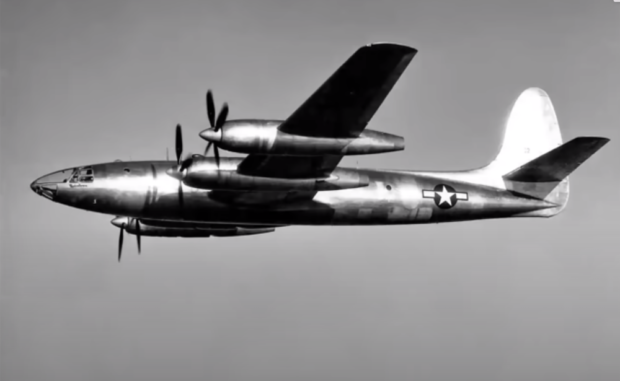The right airplane at the wrong time – the story of Republic’s attempt to build a record-breaking photo-recon aircraft and commercial airliner in 1946.
The Republic XF-12 Rainbow was an American four-engine, all-metal prototype reconnaissance aircraft designed by the Republic Aviation Company in the late 1940s. Like most large aircraft of the era, it used radial engines, specifically Pratt & Whitney R-4360 Wasp Major corncob engines. The XF-12 was referred to as “flying on all fours” meaning: four engines, 400 mph (640 km/h) cruise, 4,000 mi (6,400 km) range, at 40,000 ft (12,000 m).
The aircraft was designed to maximize aerodynamic efficiency. Although innovative, the jet engine and the end of World War 2 made it obsolete, and it therefore did not enter production.
The original proposal from the United States Army Air Corps Air Technical Service Command in late 1943 was for a 400 mph (640 km/h) reconnaissance aircraft with a range of 4,000 nmi (7,400 km; 4,600 mi) and a ceiling of 40,000 ft (12,000 m). Its primary objective was high-speed overflights of the Japanese homeland and key enemy installations. During World War II, due to the range requirements of operating in the Pacific, existing fighters and bombers were being used but were poorly suited. The need existed for dedicated photo-reconnaissance aircraft with speed, range, and altitude capabilities beyond what was available.
In August 1943, U.S. President Franklin D. Roosevelt’s son, Colonel Elliot Roosevelt, commander of a Lockheed F-5 (a modified P-38 Lightning) “recon” unit, recommended the acquisition of a dedicated high-performance photo reconnaissance aircraft to provide pre- and post-strike target analysis intelligence as well as photo interpretation to better allow commanders to make decisions for bombing raids.
Republic Aviation submitted the XF-12 and it was competing against the Hughes XF-11. Both were powered by the new P&W R-4360. The XF-12’s first flight was made on 4 February 1946 and during flight testing, it reached an altitude of 45,000 ft (14,000 m) at 470 mph (760 km/h), and demonstrated a range of 4,500 mi (7,200 km), exceeding design criteria. The XF-12 could photograph in both daylight and night and under conditions of reduced visibility at high altitudes over long ranges and with great speed. This “flying photo lab” was capable of mapping broad stretches of the globe.
Only two prototypes were built each of the XF-11 and the XF-12 were ordered into service by the U.S. Army Air Forces,[3] as the requirement evaporated after World War II ended, while the cheaper off-the-shelf Boeing B-29 Superfortress and Boeing B-50 Superfortress could temporarily fill the role until the jet-powered Boeing RB-47 Stratojet entered service. The XF-12 was the fastest aircraft of its day to use four reciprocating engines, and the only one to exceed 450 mph (720 km/h) in level flight.
Sources:YouTube; Wikipedia

